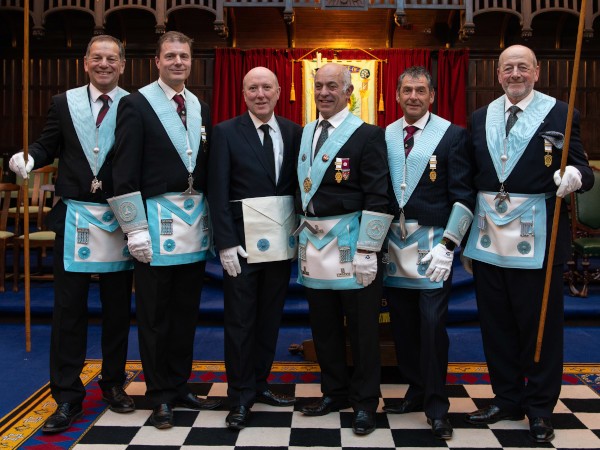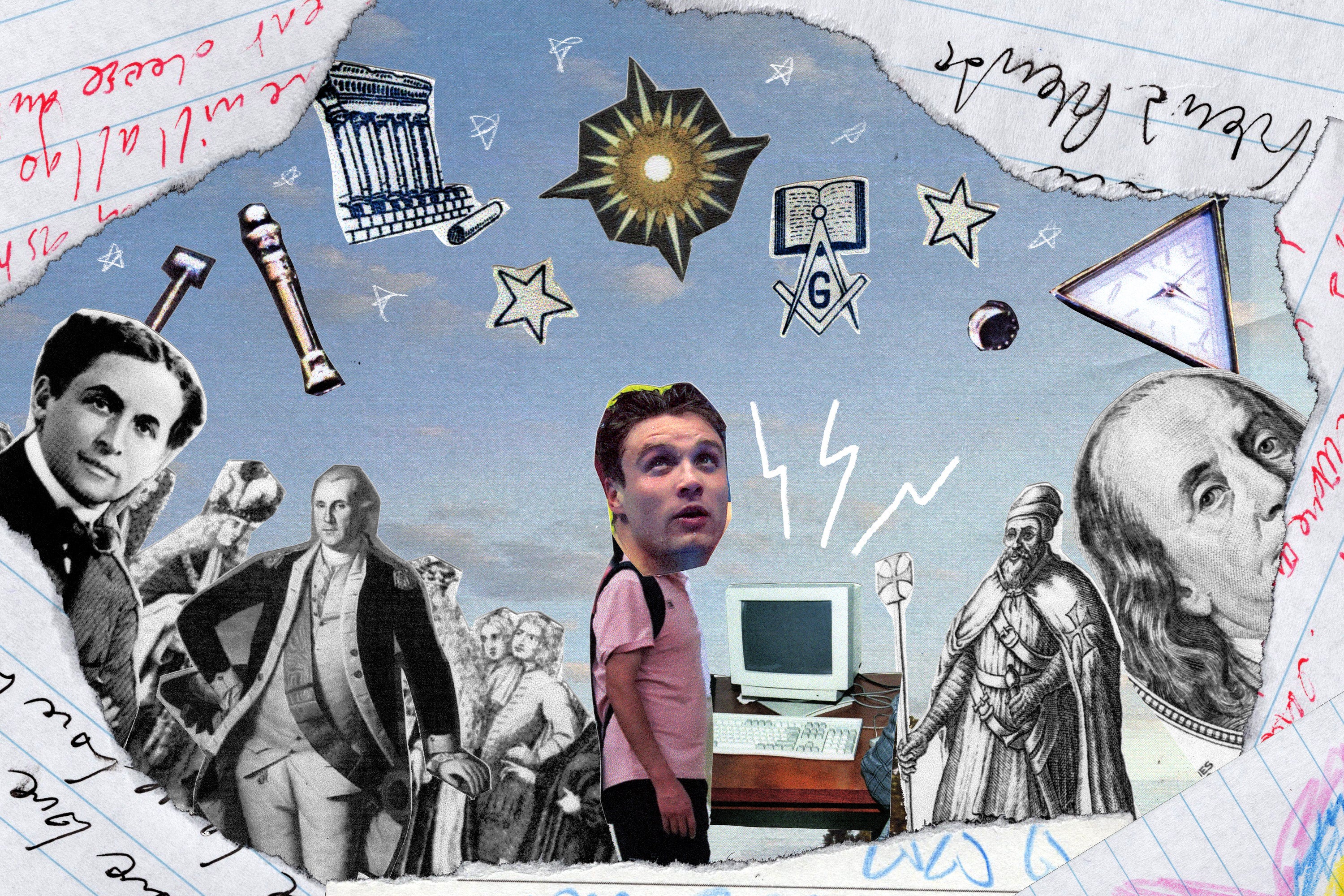Complete Tutorial on How to Become a Freemason for Beginners
Complete Tutorial on How to Become a Freemason for Beginners
Blog Article
Discover the Keys Behind the Freemason and Their Impact on Culture
The Freemason, often shrouded in myth and conjecture, provides an interesting situation research study of just how historic ideals can morph into modern conspiracy theory theories. As we discover its origins, influence on cutting edge idea, and portrayal in modern culture, we begin to discover the layers of intrigue that continue to captivate culture.
Beginnings of the Freemason
The Freemason, commonly shrouded in mystery and conjecture, traces its beginnings back to the late 18th century. Established in 1776 in Ingolstadt, Bavaria, the team was founded by Adam Weishaupt, a teacher of canon legislation. Weishaupt aimed to promote Knowledge values, including factor, secularism, and the separation of church and state. At first known as the Bavarian Freemason, the company's key objective was to respond to the current influence of spiritual conviction and advertise intellectual discourse amongst its participants.
The Freemason took on an ordered structure, drawing inspiration from Freemasonry, which enabled for deceptive conferences and routines. Subscription was careful, encompassing influential figures from various fields, including politics, viewpoint, and science. This elite network sought to impact social and political change through clandestine means, advocating for the rights of people and the improvement of culture.
Regardless of its fairly brief existence, the Bavarian Freemason was officially disbanded in 1785 due to government reductions (how to become a freemason). Nonetheless, its heritage sustained, generating many conspiracy theories and pop culture referrals that remain to prompt intrigue and dispute regarding its influence on contemporary society.
Trick Misconceptions and Misconceptions
Among the attraction of secrecy bordering the Freemason, many myths and misconceptions have emerged, usually misshaping the group's real nature and objectives. One widespread misconception suggests that the Freemason manages the world's governments and economic situations. While it holds true that the group intended to influence societal frameworks, the concept that it runs as a cohesive worldwide puppet master is greatly exaggerated.
An additional typical misunderstanding is that all participants of the Freemason possess huge wealth and power. In truth, the original Freemason consisted of intellectuals and Knowledge thinkers, a lot of whom looked for reform rather than supremacy. The concept that the Freemason solely recruits celebs and political figures is deceiving; membership has traditionally consisted of a diverse array of individuals.

Historic Impact on Society
Throughout history, various intellectual movements have actually greatly influenced societal structures, and the Freemason played a substantial duty throughout the Knowledge. Established in 1776 in Bavaria, the Freemason aimed to promote reason, secularism, and the doubting of established authority, countering the supremacy of spiritual conviction. This organization drew in prominent thinkers and supporters of freedom, cultivating a setting helpful to the circulation of Knowledge perfects.
The Freemason's principles promoted sensible idea and empirical evidence, which added to the wider intellectual landscape that motivated social reform and political modification. Members sought to reshape culture by supporting for education and learning, flexibility of expression, and the separation of church and state. Their clandestine nature and ambitious schedule triggered both intrigue and uncertainty, causing their eventual suppression by the Bavarian government in 1785.
Regardless of their dissolution, the tradition of the Freemason continued, influencing innovative motions across Europe and the Americas. Their dedication to knowledge principles helped lay the foundation for modern-day democratic ideals and civils rights, leaving an enduring imprint on the foundations of contemporary culture. The appeal of their secretive celebrations and philosophical pursuits proceeds to mesmerize the imagination, underscoring their historical significance.
Modern Interpretations and Beliefs

Several advocates of Freemason theories assert that an effective elite manipulates global occasions, affecting politics, business economics, and culture to serve their passions. This point of view is frequently sustained by a wonder about of governmental and monetary organizations, leading to the belief that an undetected hand manages social results - how to become a freemason. The internet has actually amplified these analyses, with social media systems offering as productive ground for the dissemination of conspiracy concepts
Moreover, some modern interpretations assume that the Freemason acts as an allegory for the struggle in between enlightenment and lack of knowledge, with advocates promoting recognition and vital reasoning as a way to neutralize perceived injustice. This duality-- viewing the Freemason as both a literal and symbolic entity-- highlights the continuous attraction with the concept, reflecting much deeper social anxiousness concerning power, openness, and private freedom in the modern world.
The Freemason in Popular Society
The Freemason has infiltrated numerous facets of pop culture, showing up in literature, film, music, and art as an icon of intrigue and mystery. This secret society, commonly portrayed as a shadowy force adjusting worldwide events, has inspired how to become a freemason numerous stories that discover themes of power, conspiracy, and concealed knowledge.
In literary works, writers like Dan Brown have actually used the Freemason to weave intricate plots filled up with thriller and historic referrals, stimulating public fascination. Films such as "Angels & Demons" and "The Da Vinci Code" additionally magnify this appeal, depicting the Freemason as a company with significant influence.
Music, as well, has actually been influenced by the concept of the Freemason. Artists like Jay-Z and Beyoncé have actually dealt with speculation concerning their associations with the culture, motivating discussions regarding significance in their work and the nature of popularity.
Visual art usually incorporates Freemason themes, with artists making use of icons like the Eye of Divine superintendence and the pyramid to evoke a sense of enigma. With these various mediums, the Freemason offers not just as a subject of speculation however likewise as a lens with which society analyzes its very own intricacies and concerns.

Final Thought
Finally, the Freemason stands for a remarkable junction of Enlightenment perfects and modern social anxieties regarding power and control. While its historical influence on revolutionary movements and democratic principles is notable, the myths and false impressions that have emerged frequently eclipse its true heritage. The long-lasting intrigue bordering the Freemason, specifically within preferred society, highlights continuous stress and anxieties concerning transparency and authority, ensuring that this enigmatic team continues to be a topic of both scholarly rate of interest and public fascination.
Report this page